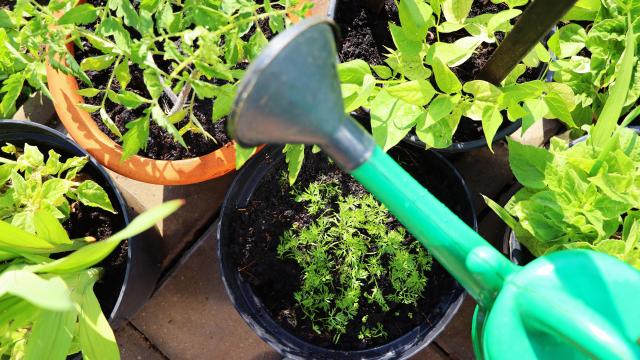You may have done your planting in the spring, but that doesn’t mean the work in your garden is finished. In fact, now’s the time for some mid-summer maintenance. To make things as simple as possible, here’s a checklist to walk you through some essential midseason tasks.
Your mid-summer garden maintenance checklist
Of course, every garden is different, so these may not all apply to yours. But they should at least provide you with an idea of the types of tasks that could benefit your garden this time of year.
1. Deadhead perennials
Deadhead (i.e. snip off) any dried-up, brown flower heads of perennials past their prime, including those planted in the ground, in containers, and in hanging baskets. This will not only leave your garden looking better, but it also encourages new growth in those that got a trim.
2. Take care of any pest problems
If you’ve noticed that something has been munching on your plants, now’s the time to figure out who is responsible for the damage before they keep feasting. You’ll have a better chance of getting rid of pests if you identify them first, and then pick a method that targets that insect without harming your other plants, or your local pollinators.
Be on the lookout for Japanese beetles, which tend to arrive in late June or early July and make themselves at home until mid-August and can do some serious damage to your garden.
3. Tend to your tomatoes
Depending on the weather in your area, some of your early tomatoes may have blossom end rot. This is pretty common when it’s been especially hot, and is nothing to be too worried about. Just remove any rotted fruit to make room for healthy tomatoes later in the season.
4. Cover your ground
Do you have a gap in your vegetable garden rotation? If so, you may want to plant a summer cover crop to help slow soil erosion over the next few months. Popular options include buckwheat or lacy phacelia, and sudex (sudangrass or sorghum-sudangrass).
5. Adjust your lawn mower settings
Those with traditional grass lawns should consider raising their mowing height to four (or more) inches, if possible. Not only does that help keep your soil cooler, but it also gives the grass more of a chance to recover after being cut.

Leave a Reply
You must be logged in to post a comment.